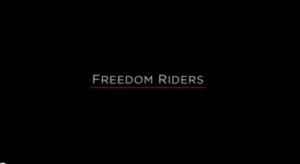To enable the African-American Civil Rights Soundscape to successfully tell the story of four poignant individuals of the movement and how they supported or opposed the movement, research will be done into areas including content, production, and listening. This will be written about in this section of the blog on a weekly basis and will include what I have been researching in a particular week and how it may influence my soundscape.
Content Research
Mississippi Burning
Mississippi Burning was a film released in 1988 that told the insightful story of how an entire town in Mississippi was torn apart by racism during the 1960’s. This was an essential film to watch as part of my research as it gave me a better understanding of how strongly people felt about the movement and how not everyone supported the campaign. The film also gave me an idea to maybe include a gospel singer into my soundscape at some point and how powerful just one voice can be in a piece without any accompaniment. The film highlights how people were strongly opposed to racial integration and one area of my soundscape will touch on this with George Lincoln Rockwell. In the film music is used as a powerful tool to tell the story when there is an absence in the narrative, just visuals and music alone can create a certain atmosphere and the music is an integral part of what the feeling of that atmosphere is. I hope to being this concept into my soundscape, however as I have no visuals I will try to develop an atmosphere with just music and audio samples.

Jimi Hendrix – Political Beliefs and Outlook
Jimi Hendrix’s rise to fame coincided with the civil rights movement in the 1960’s and Hendrix was renowned for his views on free expression which he did with his music. Many people believe that Hendrix was a bridge between white and black people and that he helped intergrate people through his music. When asked once what changes Jimi would like to see in America he replied ‘brighter clothes’ which highlighted how he kept his political views quite personal.
Although he was a very shy individual he was merging together two genres of music in what he was doing when he came to London in 1966, Blues and Rock. Blues was a very popular genre of music for Black people to listen to and Rock was popular amongst white people and Hendrix was bringing these two groups together with his compositions. Jimi Hendrix was a multiculturalist and in a way a very poignant figure during the civil rights movement and brought white and black people together using music.
John F. Kennedy
There will be four main people in my soundscape that played an important role in the civil rights movement during the 1960’s. One of these people was the 35th President of the United States. Kennedy’s 1960 campaign before his election highlighted his views on the subject and he verbally supported racial integration. John F. Kennedy also played a part in the release of Martin Luther King, Jr., in 1960 when he was arrested during a protest at a restaurant, Kennedy phoned Coretta Scott King to express his concern and then a phone call to the judge by Robert Kennedy led to the release of Martin Luther King, Jr. After his election, Kennedy appointed a number of African Americans to high-level positions in the administration and strengthened the civil rights commission. The Civil Rights Act of 1964 may never have been able to happen if it hadn’t have been for John F. Kennedy and his support during the movement, sadly he was assassinated in November 1963 and never got to see the Civil Rights Act passed the following year.
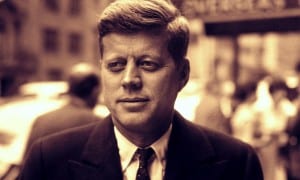
Malcolm X
The second movement of my soundscape will be based on the role of Malcolm X in the civil rights movement. Malcolm X was an African-American Muslim minister born in Nebraska and was a member of the Nation of Islam. He was known for standing for the Black population living in North America and in 1946 he was sentenced to 8-10 years in prison. After he was released from prison, Malcolm X promoted the teachings of the Nation of Islam with views such as ‘White people are the devils’. In 1963, Malcolm X left the Nation of Islam and planned to create a Black nationalist orginasation. Two years later in 1965, Malcolm X was preparing to address an audience in the Audubon Ballroom in New York when he was approached by two men who shot and killed him. Since his death, he has been regarded as one of the greatest and most influential African-Americans in history and credited for raising the self-esteem of black Americans. His image was displayed in homes, offices and schools and even t-shirts.
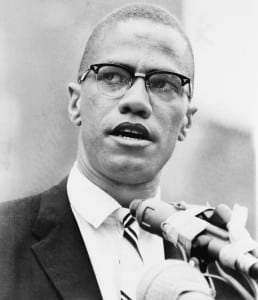
George Lincoln Rockwell
In March 1959, George Lincoln Rockwell founded a union that a few months later would become ‘The American Nazi Party’. Rockwell was born in Bloomington, Illinois and was his political views and beliefs were centered around the Nazi ideology that existed in Germany prior to the second world war. In regards to the civil rights movement, Rockwell assisted the Ku Klux Klan in certain counter-demonstrations against other civil rights figures such as Martin Luther King, Jr. Rockwell was very much opposed to racial integration and believed that blacks should be deported to Africa and that all Jews should be sterilised, his extreme views we very controversial and they led to him being nicknamed, ‘The American Hitler’. On the 25th of August in 1967, Rockwell was shot dead by a sniper at a shopping centre in Arlington, Virginia. Minutes after Rockwell was shot, John Patler was arrested and charged with his murder. The Pentagon refused to allow Rockwell’s body to be buried in the national cemetery due to his followers wearing swastika armbands which they refused to take off when asked. George Lincoln Rockwell was a neo-Nazi that believed America should be a country for White people, not blacks.
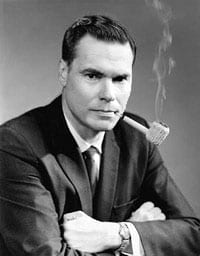
Martin Luther King, Jr.
King was born in 1929 in Atlanta, Georgia and was an American pastor, activist and a leader in the African-American Civil Rights Movement. During his life King helped found the Southern Christian Leadership Conference (SCLC) and helped organise and coordinate civil rights activity in the region.In April 1963, the SCLC began a campaign against racial segregation in Birmingham, Alabama which saw the arrest of King. After King was released form prison it sparked the march of thousands of children and students in Birmingham in support of King, responding to his imprisonment. After the success of the Birmingham campaign King went on to give a speech in August of 1963 that is now renowned for being one of the most famous speeches in history, ‘I have a dream’. In this speech King called to end racism in the US and it was delivered to 250,000 civil rights supporters on the Lincoln Memorial in Washington, D.C. A few years later in 1968, King was in Memphis Tennessee addressing a group at a rally. A day later he was shot at a motel as he was stood on a balcony, later at the hospital he was pronounced dead. In the aftermath of King’s death there were race riots in numerous cities all over the US and the killer, the killer James Earl Ray was captured a few months later and convicted of murdering King. In his honour there is an American federal holiday which marks the birthday of Martin Luther King, Jr. He goes down in history and is remembered as one of the most important figures to help towards putting an end to racism in the US.
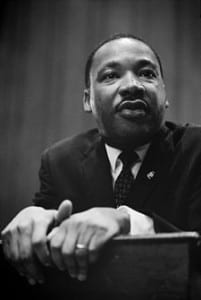
Production Research
Endtroducing…
DJ Shadow is an American music producer and in 1996 released an album that is a major influence for my project, Endtroducing. Endtroducing is an instrumental hip-hop album that is known for how it is composed using almost entirely sampled content but was done in an era when getting samples to use was a lot more difficult than it is now. The reason that this album is an inspirational piece of art for my project is that the majority of my soundscape will include voice samples from the 1960’s but mine will be ripped from content that is found on the internet. A lot of tracks on Endtroducing repeat the same sample in a rhythmic way to create a ‘trip’ effect that many have dubbed as ‘Trip Hop’. I aim to use this type of production techniques in my piece and portray the story of the civil rights movement and how certain individuals supported and were opposed to it. One particular track on the album ‘Building Steam with a Grain of Salt’ uses sampling to tell a story and this will be a big production influence on my work for the project. I will integrate certain ideas like ‘reversing parts’ and slowing down and speeding up clips, these are techniques that this album has exposed me to.

Soon It Will be Cold Enough to Build Fires
Emancipator is an American musician who also uses samples in his productions. Soon It Will be Cold Enough to Build Fires is an example of where some musical ideas will come from during my production. In the track there is very sparse instrumentation during the majority of the song and this mainly consists of drums, bass and keyboard. This type of production technique is very immersing to the listener and I feel that this could work well behind my audio samples and narration. There is a very ambient feel to this track and this is due to the amount of reverb on the keyboard which creates a mellow feel when listening to the piece. I hope to re-create this type of feel with the music in my audio project and I think it is an idea that could work well. I am using this type of music as I feel it will work better than a composition that has much more texture, if there is too much going on with the music then the listener could be drawn away from the narration and audio samples. This will influence my project as I am hoping that the music element of my piece will be sparse as it creates a certain mood.
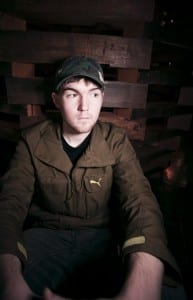
Sample-Based Beats
A major element of my soundscape is sampled beats that I have used and I have spent time cutting these parts up and shifting clips around to create the rhythm that I wanted to use in each movement. I have done this to make the music in my project more individualistic and much of my musical composition has been influenced from the hip-hop genre. In the book Making Beats: The Art of Sample-Based Hip-Hop by Joseph G. Schloss, beats are explained as ‘musical collages of brief segments of recorded sound’ and derive from early hip-hop when a DJ played rhythmic sections of popular records accompanied with an MC on the microphone. Over time hip-hop music has made more use of sampling and I have incorporated this element a lot throughout my piece. I have also reversed certain parts and applied little tricks to try my best to make sure that the music fits into a hip-hop genre rather than a standard rhythm typical of popular music. Another hip-hop element that is evident in my soundscape is the heavy reverb on the drums and I have done this to make the rhythm parts sound big to give the piece a more powerful edge when the narration and audio samples are played on top of them. Overall, sampling has played a huge part in my project and it is my first go at composing this type of music.
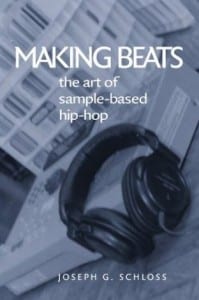
Sound Effects
Although my soundscape was an audio project, I wanted the piece to give the listener a visualisation of the content. I helped to do this by the use of sound effects, such as the gunshot sounds in one of the movements. Sound effects are used in film soundtracks and TV shows and are also necessary for some piece of music. I only used a few effects in this project to bring the piece to life but a good piece of reading research for my project was The Sound Effects Bible by Ric Viers and he describes a sound effect to be a sound that is ‘artificially reproduced to create an effect in a dramatic presentation’. My sound effects were taken form different sound libraries because many were gunshots and these would have been difficult to record if I had used the foley technique. All of the effects used in the piece were given my own personal touch by processing different parts with certain cuts and boosts with EQ. I was happy with my overall result but it would have been good to use The Sound Effects Bible to have recorded some effects myself, this could have pushed the project to be a little bit more realistic. However, I do feel that choosing to use effects in my soundscape was a good move as it just helps the listener visualise the content a little bit clearer. I wanted to use ambulance sirens on the JFK assassination part but this wouldn’t have been realistic and true to the history as there was no ambulance involved during the rush to the hospital. Overall I as happy with my subtle use of sound effects and the reading was very helpful in how to manipulate effects when it came to editing in pro tools.
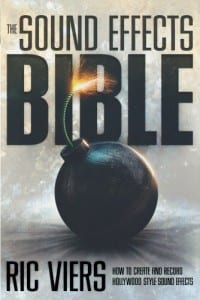
Listening Research
Bush Killa
Bush Killa is a Hip hop track by political rapper Paris that is about a revenge fantasy of the assassination of President George H. W. Bush. The reason I have been listening to this song for my research is that it includes elements of how I want to portray my piece, especially at the beginning of Bush Killa when Paris creates a story of an assassination in front of a group of people by just using sound. I would like to take ideas from this song to use in my own piece, especially by using sound effects and recording a group of people screaming for a certain part of my project when one of the main four is assassinated. Also his use of sound effects such as gun shots may be good to use in my soundscape for the assassination parts.

Matthew Herbert
In 2011 Matthew Herbert released a concept album titled One Pig which documented a pigs life over 20 weeks from its birth to its slaughter. This is important research for my soundscape as Matthew Herbert used a lot of sample recordings in his tracks for the album and I aim to use a lot of samples in my soundscape. What is interesting about One Pig is that Herbert incorporates his use of sample recording with music and the result is a record that is very clever in how it was produced. An example of this is evident on one track when a sample of ‘dripping blood’ is turned into a bass line, this highlights how samples can be used and manipulated and turned into a rhythm or melody in a piece of music. I hope to draw on elements of Herbert’s work when it comes to my audio project, especially the uses of manipulating sounds to create certain effects, such as slowing down a piece of audio to build a crescendo-like effect into the following part.
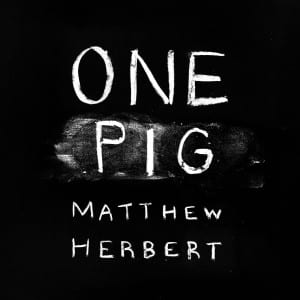
BBC Radio 1 Stories
BBC Radio 1’s Stories is a radio show that is broadcast every Monday night from 21:00 to 22:00. I feel that this is is the type of show that would fit my soundscape well as the stories are a type of documentary format which explore scenes, eras and cultural phenomena that have shaped the music world that we live in today. As my soundscape will be roughly 8-10 minutes long, it would fit well into a show that was investigating the issue of the African-American Civil Rights Movement and how music has been influenced by the movement. The programme could cover a brief history of the movement in America and what it led to and then see how music changed since the movement. Music will have been heavily influenced as racial integration would have brought together black and white musicians and different genres would have been brought together, such as Blues and Pop. Using this output for my soundscape would be great as my audio project highlights elements of hip-hop and structures typical of pop music. Therefore Radio 1’s Stories would be a good place to broadcast my piece on a programme that held the civil-rights movement as it’s subject.
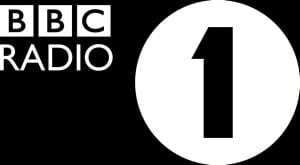
The Documentary Format
As my soundscape uses a lot of element that are typical of a documentary (without the visuals), it is necessary to look at a documentary about civil rights that already exists and see how it uses and integrates music. One particular documentary called Freedom Riders (https://www.youtube.com/watch?v=wz3YditutiE) is nearly a two hour video that uses a lot of footage from the civil rights movement in the 1960s and throughout it music comes in and out. The technique of using music behind visuals is common in film but the choice of what kind of music to use is very important as it can set the mood despite the visuals. At the end of my soundscape I use an old post-civil rights movement song entitled Oh, Freedom and this is sung by The Golden Gospel Singers, choosing this was very important as not only does it relate to the subject but it fits brilliantly behind the Martin Luther King, Jr. speech that I use at the end. In Freedom Riders the approach with the music is to use songs of a slow tempo and pieces that are in a minor key, this is to ensure the documentary doesn’t come across as happy as this would ruin their overall aim of a powerful piece of video. My approach with the ending piece was the same similar idea as I didn’t want to make the soundscape come across as a joke and I wanted to make the ending as powerful as I could and I think I achieved this. The ending to the piece is much more powerful than the beginning (which I wasn’t that happy with) but overall I think it does the subject justice.
